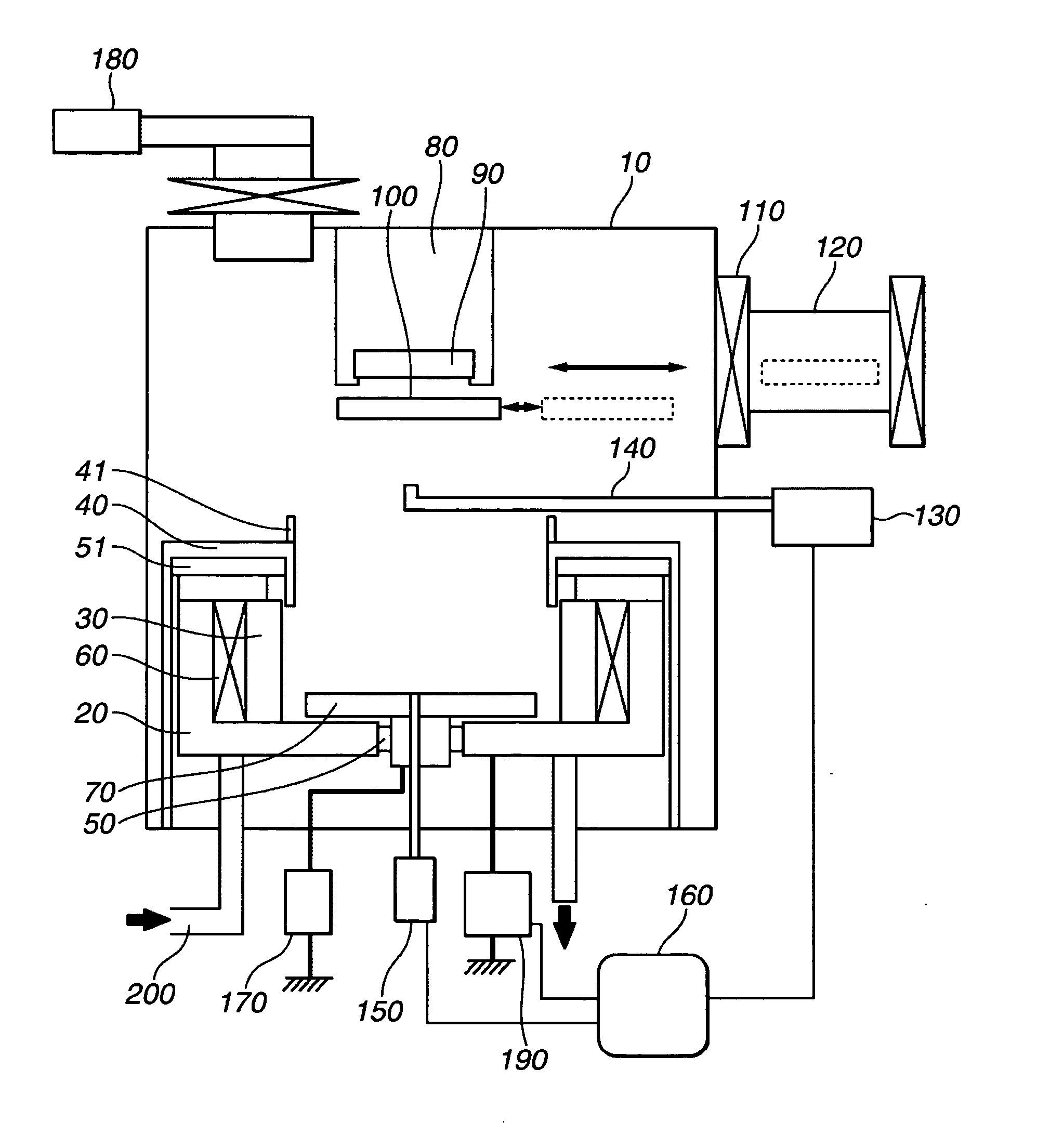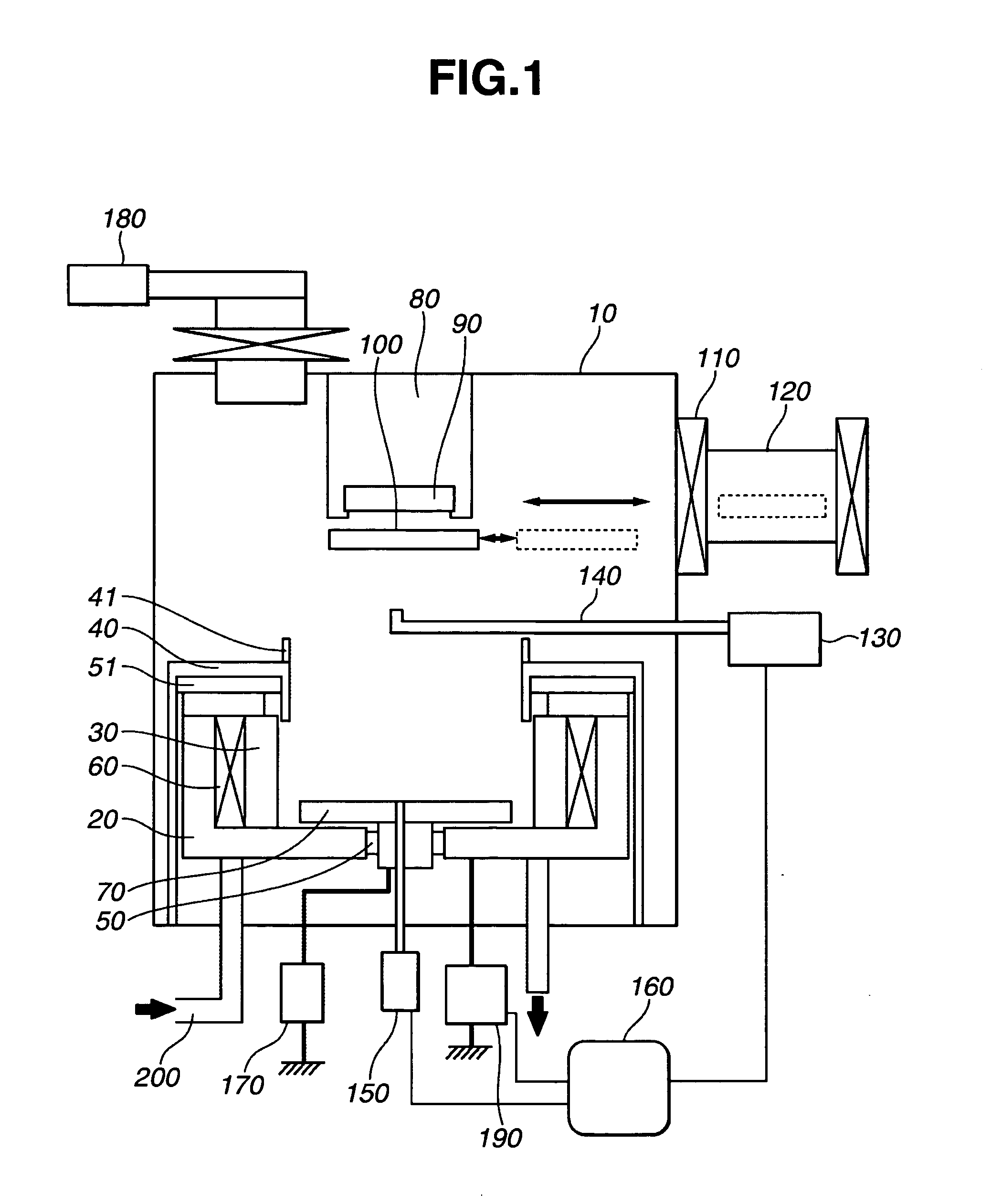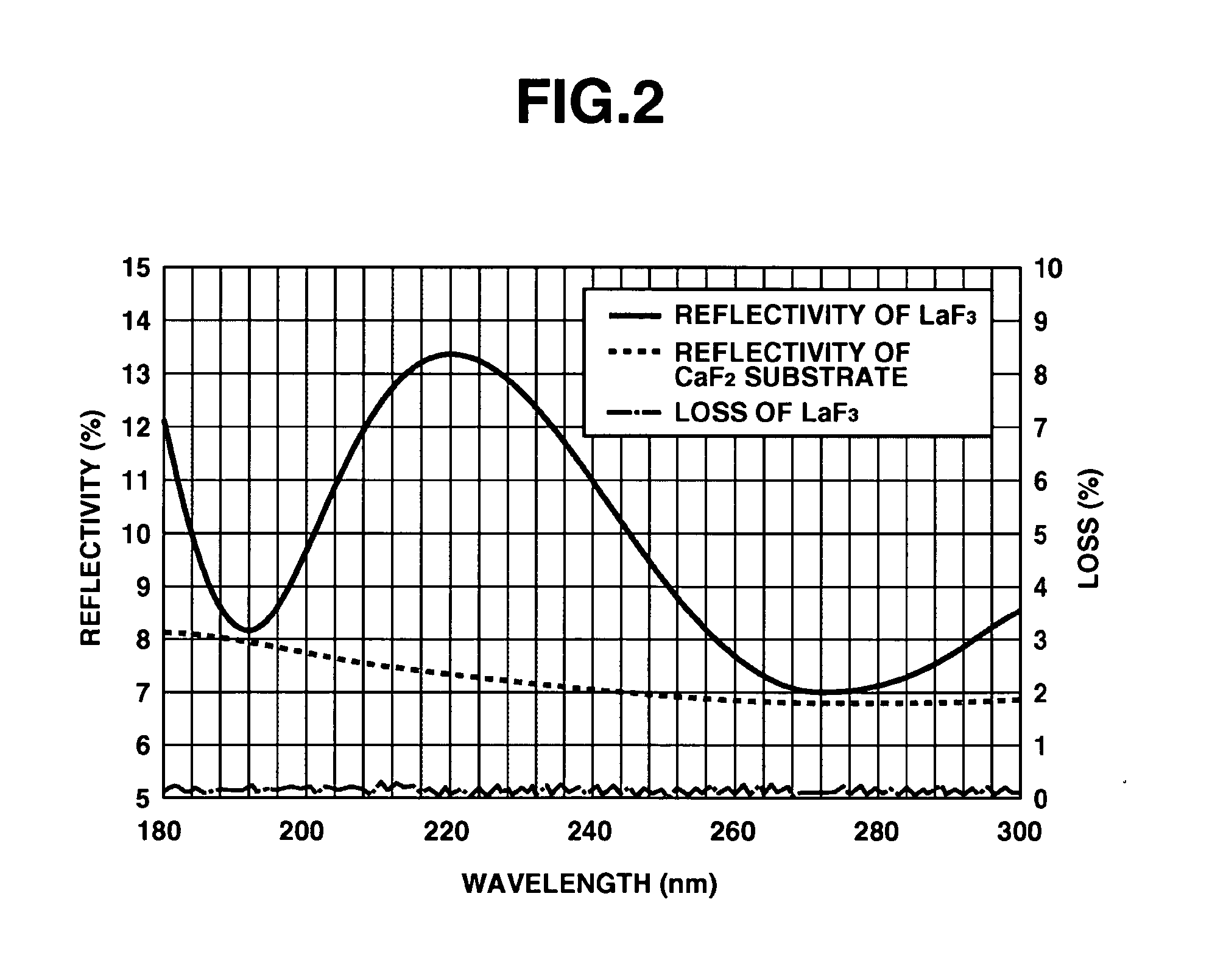Reactive sputtering method
a sputtering method and sputtering technology, applied in mechanical equipment, electrical control, machines/engines, etc., can solve the problems of difficult high-precision control of film thickness, easy damage of film, and insufficient film strength
- Summary
- Abstract
- Description
- Claims
- Application Information
AI Technical Summary
Benefits of technology
Problems solved by technology
Method used
Image
Examples
first embodiment
[0026] In the present invention, a cylindrical target with an opening portion provided at least at one end thereof and a supplying hole for admitting an inert gas into the interior thereof, and a substrate are disposed in an apparatus, and sputtering is performed by admitting an inert gas into the target through the supplying hole while spraying a reactive gas toward a surface of the substrate.
[0027] In a second embodiment of the present invention, the sputtering is performed in the first embodiment such that the reactive gas is not diffused in an inverse direction. Almost no reaction occurs between the reactive gas and the target when the inverse diffusion of the reactive gas is prevented. Accordingly, a high sputtering rate can be more stably secured. Further, since a higher concentration of the reactive gas can be attained on the substrate surface, a more stable reaction can be maintained.
[0028] In a third embodiment of the present invention, the sputtering is performed in the f...
ninth embodiment
[0057] In a thirtieth embodiment of the present invention, the gas containing oxygen contains at least one of O2 and H2O (water vapor) in the twenty-
[0058] In a thirty-first embodiment of the present invention, the conductance of the emitting port for the reactive gas is made equal to or less than 1×10-4 m3 / s in any one of the twentieth to thirtieth embodiments.
[0059] In a thirty-second embodiment of the present invention, an emitting speed of the reactive gas is made equal to or more than 50 m / s in any one of the twentieth to thirty-first embodiments.
[0060] A first example of the present invention directed to a DC sputtering apparatus will be described with reference to the drawings.
[0061]FIG. 1 illustrates a cross section of a DC magnetron sputtering apparatus according to the first example. As illustrated in FIG. 1, the sputtering apparatus is provided with a vacuum chamber 10 for keeping an inside of the apparatus under an approximately vacuum condition, and an evacuating sys...
PUM
| Property | Measurement | Unit |
|---|---|---|
| Volumetric flow rate | aaaaa | aaaaa |
| Volumetric flow rate | aaaaa | aaaaa |
| Speed | aaaaa | aaaaa |
Abstract
Description
Claims
Application Information
 Login to View More
Login to View More - R&D
- Intellectual Property
- Life Sciences
- Materials
- Tech Scout
- Unparalleled Data Quality
- Higher Quality Content
- 60% Fewer Hallucinations
Browse by: Latest US Patents, China's latest patents, Technical Efficacy Thesaurus, Application Domain, Technology Topic, Popular Technical Reports.
© 2025 PatSnap. All rights reserved.Legal|Privacy policy|Modern Slavery Act Transparency Statement|Sitemap|About US| Contact US: help@patsnap.com



